Difference between revisions of "Softening"
| (17 intermediate revisions by one user not shown) | |||
| Line 4: | Line 4: | ||
| − | ==Softening leather== | + | ==Softening leather - Soft leather== |
| − | + | Consumers always touch leather first. Is it soft, warm, natural? Consumers want soft [[leather clothing|garment leather]], as well as [[car leather|car]] or [[leather furniture|furniture leather]]. Leather in most cases should be as [[Haptic evaluation of leather surfaces|soft and natural]] as possible. The tanner achieves this through various processes. | |
| − | == | + | <p align=center> |
| − | + | [[bild:Lederqualitaet-Leder-01.jpg|500px]] | |
| + | </p> | ||
| + | |||
| + | |||
| + | ==Tumbling - Milling== | ||
| + | The process of softening the leather fibres is achieved by a rotating movement in a narrow, high, rotating barrel. This is necessary because the leather fibres stick together during [[Drying leather|drying]], making the leather feel firmer. Also the [[finish]] on the leather makes it stiffer and must be softened. Short rods and steps in the barrels reinforce the movement of the leather. There are many machine variations for the tumbling and milling of leather. | ||
| Line 23: | Line 28: | ||
</p> | </p> | ||
<p align=center> | <p align=center> | ||
| − | '' | + | ''The drums are narrow and the fibres are additionally loosened by rods or steps when rotating in the walking barrel'' |
</p> | </p> | ||
| − | == | + | ==Stacking - Stacker - Stacking machine== |
| − | + | Stacking also makes [[leather]] softer by softening the leather fibres. A stacker (stacking machine) has two plates with knobs and opposite recesses. Constant vibration ensures the leather is punctually pressed into the recesses by the knobs causing the fibre to stretch. This method stretches and softens the leather so that the [[Measures and weights|total surface]] of the hide increases. Stacking also reinforces the [[Leather grain - Grain side|grain pattern]] and reduces [[looseness]]. A correct [[Drying leather|moiture content]] in the leather is important to avoid damages to the leather structure when too dry staking. | |
| − | + | ||
| − | + | ||
<p align=center> | <p align=center> | ||
| − | [[bild:Stollen-Gerberei-01.jpg| | + | [[bild:Stollen-Gerberei-01.jpg|500px]] |
| − | + | ||
</p> | </p> | ||
<p align=center> | <p align=center> | ||
| − | '' | + | [[bild:Stollen-01.jpg|500px]] |
| + | </p> | ||
| + | <p align=center> | ||
| + | ''The stacking machine softens the leather.'' | ||
</p> | </p> | ||
| − | == | + | ==Softening leather by hands== |
| − | + | Wet leather is often stiff once dry. The leather fibres stick together during drying and the easiest way is to wipe the leather when it is still slightly moist. Then the fibres can be loosened more easily, rather than waiting until the leather is completely dry. However, dried leather fibres can also be softened by wiping. | |
| − | + | For light leather clothing, it is enough to wipe, rub, knead and pull the leather with the hands. Alternatively, the clothing can also be placed in the dryer with cold air and tennis balls. This method replicates the tumbling process in the [[tannery]]. [[Leather suits|Motorcycle suits]] are too big for that. | |
| − | + | To soften [[leather furniture|furniture]] or [[car leather]], hold the neck of an empty glass bottle with one hand and roll the leather softer with the lower edge of the bottle by pressing and rolling with the second hand. The rolling movement ensures the surface is not [[leather damages|damaged by abrasion]]. | |
| − | [[bild:Lederzentrum- | + | <br> |
| + | [[bild:Colourlock-02.jpg|16px]] -> [https://www.colourlock.com/How-To-s/Car-Leather/The-treatment-of-hardened-leather/ COLOURLOCK - THE TREATMENT OF HARDENED LEATHER] | ||
| + | <br> | ||
| + | [[bild:Lederzentrum-2016-08-Mini-viereckig-Rand-02.jpg|16px]] -> In German: [https://www.lederzentrum.de/tip/auto/kfzsoftener.html www.lederzentrum.de] | ||
| + | <br> | ||
| + | [[bild:Globus.jpg|16px]] -> Rest of the world: [http://www.lederzentrum.de/international.html#partner partners worldwide] | ||
| − | == | + | ==Videos about softening leather== |
| − | + | ||
| − | + | <p align=center> | |
| − | + | <flashow>//www.youtube.com/v/fow2V_iUtrw&fs=1&color1=0x660000&color2=0x550000&border=1|width=500|height=281,25</flashow></p> | |
| − | + | <p align=center> | |
| − | + | ''[https://www.colourlock.com/How-To-s/Car-Leather/The-treatment-of-hardened-leather/ How to soften old, hardened car leather.]'' | |
| − | + | </p> | |
| − | + | ||
| − | + | ||
| − | |||
| − | + | <p align=center> | |
| − | + | <flashow>//www.youtube.com/v/f8NcWjcZIbU&fs=1&color1=0x660000&color2=0x550000&border=1|width=500|height=281,25</flashow></p> | |
| − | + | <p align=center> | |
| − | + | ''How to soften stiff leather trousers.'' | |
| − | + | </p> | |
| − | + | ||
| − | + | ||
| − | < | + | |
| Line 78: | Line 81: | ||
<p align=center> | <p align=center> | ||
| − | <flashow> | + | <flashow>//www.youtube.com/v/-qn5R8dKcss&fs=1&color1=0x660000&color2=0x550000&border=1|width=500|height=281,25</flashow></p> |
<p align=center> | <p align=center> | ||
''The [[leather production]] in a modern [[tannery]].'' | ''The [[leather production]] in a modern [[tannery]].'' | ||
| Line 88: | Line 91: | ||
! bgcolor=#eeeeee | [[Leather production|Process steps in the leather production]] | ! bgcolor=#eeeeee | [[Leather production|Process steps in the leather production]] | ||
|- | |- | ||
| − | | bgcolor=#ffffff align=center | [[storage of leather| | + | | bgcolor=#ffffff align=center | [[storage of leather|Storage]] - [[soaking]] - [[Liming - Leather Tanning|liming]] - [[Fleshing - Making of leather|fleshing]] - [[Split leather|splitting]] - [[pickling]] - [[Tanning leather|tanning]] - [[neutralising]] - [[Drying leather|withering]] - [[Leather production#Sorting|sorting]] - [[shaving]] - [[Leather production#Dyeing - Fatliquoring - Re-tanning|dyeing - fatliquoring - retanning]] - [[Drying leather|drying]] - [[finish]] - [[softening]] - [[Leather quality|final check]] |
|} | |} | ||
</center> | </center> | ||
Latest revision as of 14:09, 20 July 2023
Contents
Softening leather - Soft leather
Consumers always touch leather first. Is it soft, warm, natural? Consumers want soft garment leather, as well as car or furniture leather. Leather in most cases should be as soft and natural as possible. The tanner achieves this through various processes.
Tumbling - Milling
The process of softening the leather fibres is achieved by a rotating movement in a narrow, high, rotating barrel. This is necessary because the leather fibres stick together during drying, making the leather feel firmer. Also the finish on the leather makes it stiffer and must be softened. Short rods and steps in the barrels reinforce the movement of the leather. There are many machine variations for the tumbling and milling of leather.
The drums are narrow and the fibres are additionally loosened by rods or steps when rotating in the walking barrel
Stacking - Stacker - Stacking machine
Stacking also makes leather softer by softening the leather fibres. A stacker (stacking machine) has two plates with knobs and opposite recesses. Constant vibration ensures the leather is punctually pressed into the recesses by the knobs causing the fibre to stretch. This method stretches and softens the leather so that the total surface of the hide increases. Stacking also reinforces the grain pattern and reduces looseness. A correct moiture content in the leather is important to avoid damages to the leather structure when too dry staking.
The stacking machine softens the leather.
Softening leather by hands
Wet leather is often stiff once dry. The leather fibres stick together during drying and the easiest way is to wipe the leather when it is still slightly moist. Then the fibres can be loosened more easily, rather than waiting until the leather is completely dry. However, dried leather fibres can also be softened by wiping.
For light leather clothing, it is enough to wipe, rub, knead and pull the leather with the hands. Alternatively, the clothing can also be placed in the dryer with cold air and tennis balls. This method replicates the tumbling process in the tannery. Motorcycle suits are too big for that.
To soften furniture or car leather, hold the neck of an empty glass bottle with one hand and roll the leather softer with the lower edge of the bottle by pressing and rolling with the second hand. The rolling movement ensures the surface is not damaged by abrasion.
![]() -> COLOURLOCK - THE TREATMENT OF HARDENED LEATHER
-> COLOURLOCK - THE TREATMENT OF HARDENED LEATHER
![]() -> In German: www.lederzentrum.de
-> In German: www.lederzentrum.de
![]() -> Rest of the world: partners worldwide
-> Rest of the world: partners worldwide
Videos about softening leather
How to soften old, hardened car leather.
How to soften stiff leather trousers.
Video about leather production
The leather production in a modern tannery.
| Process steps in the leather production |
|---|
| Storage - soaking - liming - fleshing - splitting - pickling - tanning - neutralising - withering - sorting - shaving - dyeing - fatliquoring - retanning - drying - finish - softening - final check |
| Tanning methods |
|---|
| Chrome tanning - Vegetable-tanned leather - Synthetic tanning - Tanning with fats and oils |







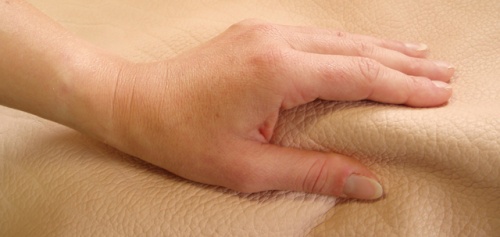
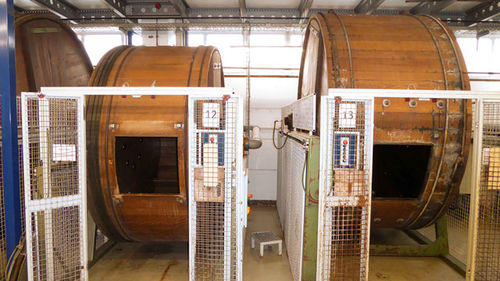
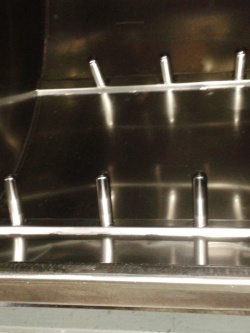
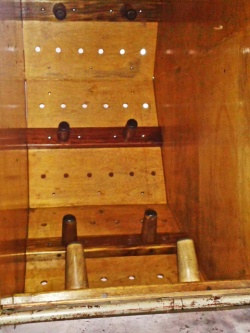
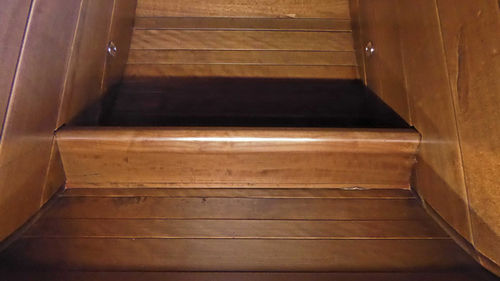
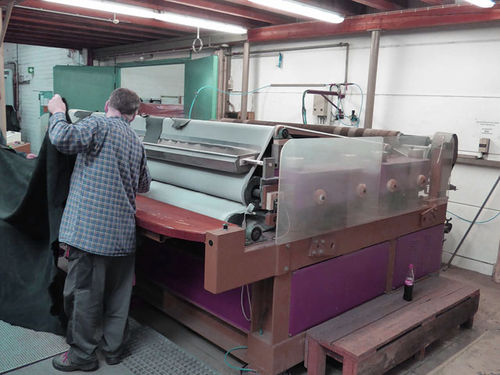
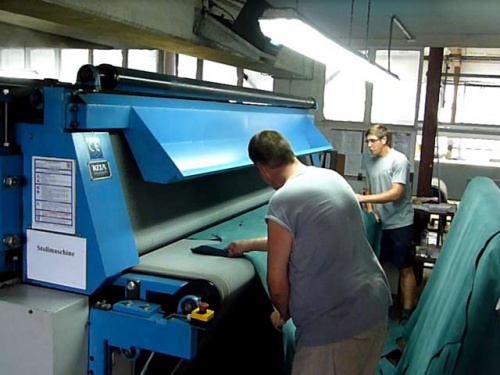

 a kotori web solution
a kotori web solution